Russian armament from the 14th century until the second half of the 17th century.
by Viskovatov
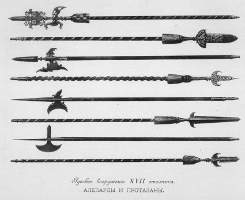
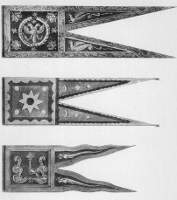
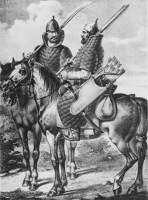
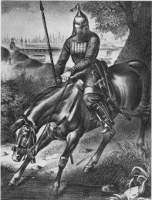
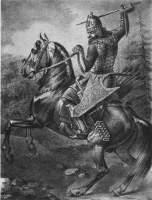
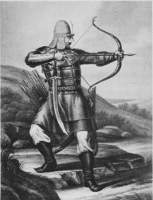
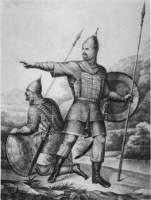
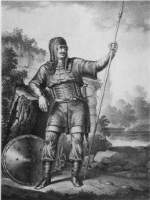
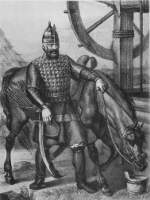
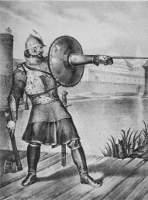
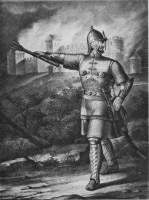
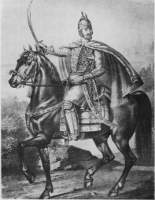
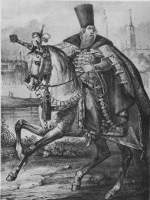
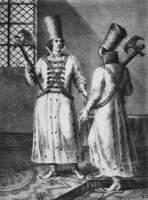
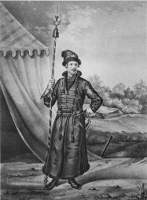
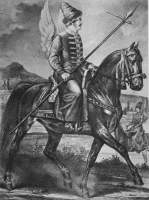
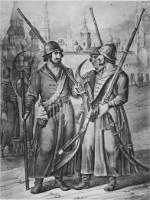
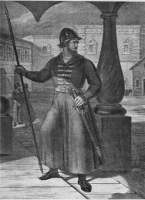
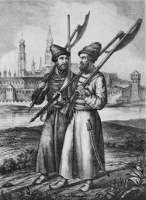
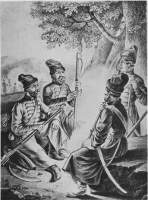
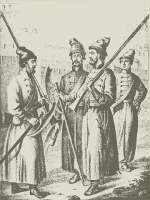
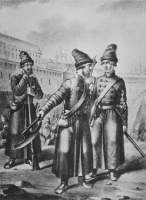
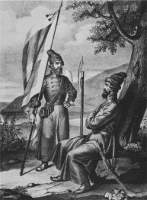
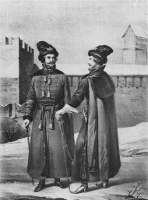
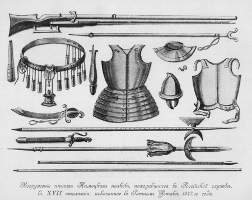
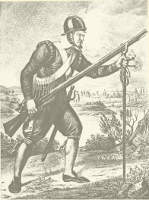
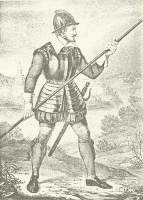
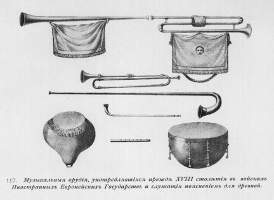
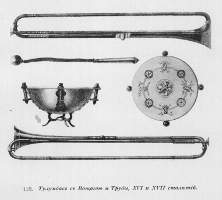
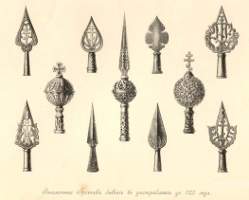
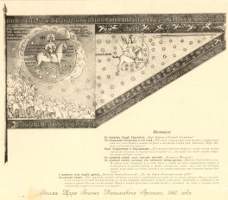
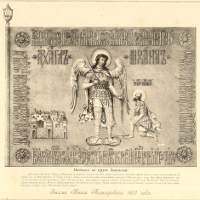
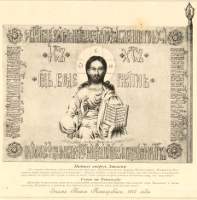
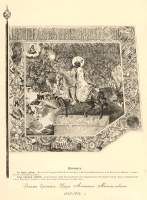
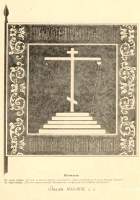
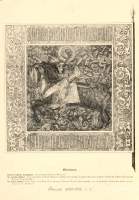
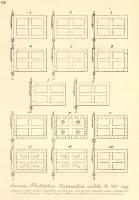
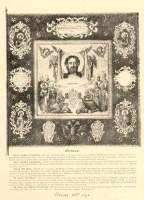
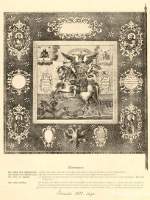
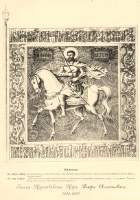
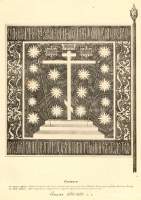









































Text link to images.
17th century Russian polearms
17th century Russian pennons
Russian Warriors in Teghily (quilted padded armour) and Shapka zhel'eznaya (caps of iron).
Russian Warrior in Yushman (armour of combined mail and plates), Shishak (conical helmet with knob at top) with ventail and Yalovetsa (pennant on helmet); armed with Kop'ya (spear) and Sabel (sabre).
Russian Warrior in Yushman (armour of combined mail and plates), Zarukava (vambraces), Rukavits (gauntlets), Buturlik (greaves), he is throwing a Sulitsa (javelin), has a Dzhid (case for javelins) which may also contain a sword, a Luk (bow) in Naluch (bow case) and Kolchan (quiver).
Russian Warrior in Kolontar (armour vest of small plates) with Barmitsa (neck protection of mail or small plates) and Shapka bumazhnaya (reinforced paper mache cap)
Russian Warriors in Yushman (armour of combined mail and plates) and Shishak ( conical helmet with a knob on top).
Russian Warrior in a short Yushman (armour of combined mail and plates) and Misyurka (skull cap with mail veil, a type of reinforced coif)
Russian Warrior in Kuyak (armour made of round metal plates) and Shapka medyanaya (copper cap)
Russian Warrior in Zertsalo (armour vest with centre plate) and Shlyem (generic helmet) (Moscow Kremlin in the 17th century). He has a Tarch (shield, whose upper part consisted of a metallic sleeve with a blade; the Russian Warrior put his arm into this sleeve). Such a shield was designed to be used during the defense of fortresses, though it was rarely seen in practice. He carries a Toporki (axe).
Russian armament from the 14th century until the second half of the 17th century. Voyevode (commander) in two Pantsiri (mail shirts) and Yerikhonka (conical pointed helmet). (Ancient castle of Neilauzen in Livonia). He carries a Bulava (mace) as symbol of his authority. His forearms are protected by Naruchi (vambraces) and his calves by Buturliki (greaves). On his belt he carries both Nosh (knife) and Sabel (sabre).
Russian Voyevode (commander) in Zertsalo (armour vest with centre plate) and Yerikhonka (conical pointed helmet).
Russian Boyar, 16th to 17th century
Russian Royal Guard, Rindi, 16th and 17th Century.
Streltsy officer with halberd in 1678
Mounted Jiltsi in 1678
Streltzi in 1613
Streltsy Musketeer in 1618
Musketeers of Moscow Streltsy regiments: Lutokhina and Ivan Polteva in 1674.
Musketeers of Moscow Streltsy regiments: Kolobov, Alexandrov, and Golovinskiy Bukhvostova in 1674.
Musketeers of Moscow Streltsy regiments: Timothy Polteva, Peter Lopuchin, Yakov and Fyodor Lopuchin in 1674.
Musketeers of Moscow Streltsy regiments: Lagovskina, Vorontsov and Naramanskogo in 1674.
Standard-bearer Znamenshchikov and Streltsy Moscow Levshin regiment in 1674.
Primary persons or officers of the Moscow Streltsy regiments: in 1674.
Armament of German infantry regiments stationed in Russian service in the 17th century; shown in the Ратном Charter in the year 1647.
Musketeer of German Regiments , in the 17th century. (View shows the city of Kolomna, in the early 17th century).
Pikeman of German Regiments, in the 17th century.
Russian musical instruments
Russian musical instruments
Finials for Russian banners
Russian banner, 1560
Dmitry Pozaharsky banner, (obverse) 1612
Dmitry Pozaharsky banner, (reverse) 1612
Russian banner, 1645-1676
Russian banner (obverse), 1645-1676
Russian banner (reverse), 1645-1676
Banners of the Moscow Streltsy regiments, in 1674. 1 Lutokhina, 2 Ivan Polteva, 3 Bukhvostova, 4 Golovlinskogo, 5 Alexandrov, 6 Kolobov, 7 Janov, 8 Timothy Polteva, 9 Peter Lopuchin, 10 Lopuchin Fedor, 11 Vorontsov, 12 Paramanskogo, 13 Lagovskina, 14 Levshina
Russian banner (obverse), 1690
Russian banner (reverse), 1690
Russian banner (obverse), 1696-1699
Russian banner (reverse), 1696-1699
Lithographs in "Historical description of the clothes and weapons of Russian troops" by Viskovatov, 2nd edition published in 1899.
Source
Viskovatov, Aleksandr Vasilíevich
Born Apr. 22, 1804; died Feb. 27, 1858, in St. Petersburg. Russian military historian.
Viskovatovís most important work, A Historical Description of the Uniform and Weapons of Russian Troops (vols. 1-30, 1841-62; 2nd ed., vols. 1-34, 1899-1948), is based on an enormous amount of archival material.